Juniper Titmouse
A species of Titmice Scientific name : Baeolophus ridgwayi Genus : Titmice
Juniper Titmouse, A species of Titmice
Botanical name: Baeolophus ridgwayi
Genus: Titmice
Content
Description General Info
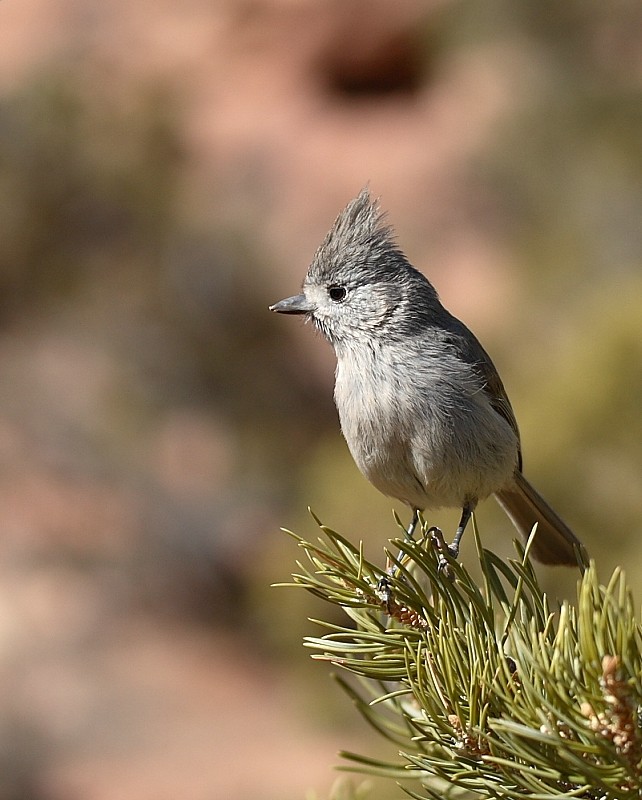 Photo By Tony Randell , used under CC-BY-SA-2.0 /Cropped and compressed from original
Photo By Tony Randell , used under CC-BY-SA-2.0 /Cropped and compressed from original Description
The juniper titmouse (Baeolophus ridgwayi) is a passerine bird in the tit family Paridae. The American Ornithologists' Union split the plain titmouse into the oak titmouse and the juniper titmouse in 1996, due to distinct differences in song, preferred habitat, and genetic makeup. The juniper titmouse is a small, gray bird with small tuft or crest. The face is plain, and the undersides are a lighter gray. Sexes are similar. This titmouse lives year-round primarily in the Great Basin, but is resident from southeastern Oregon and central Colorado south to the eastern Mojave Desert in California and central Arizona, as far as west Texas and extreme northeastern Sonora, Mexico-(the Madrean sky islands). It prefers open woodlands of warm, dry pinyon-juniper, juniper and desert riparian woods. Juniper titmice will sleep in cavities, dense foliage, or birdhouses. When roosting in foliage, the titmouse chooses a twig surrounded by dense foliage or an accumulation of dead pine needles, simulating a roost in a cavity. It forms pairs or small groups, but does not form large flocks. It may join mixed-species flocks after breeding season for foraging. The juniper titmouse eats insects and spiders, sometimes seen catching insects in mid air. It also eats berries, acorns, and some seeds, sometimes hammering seeds against branches to open them. The bird forages on foliage, twigs, branches, trunks, and occasionally on the ground. Strong legs and feet allows it to hang upside down to forage. Juniper titmice visit feeders with suet, peanut butter, and seeds. The song of the juniper titmouse is a rolling series of notes given on the same pitch. Its call sounds like a raspy tschick-adee. This species builds its nest in a woodpecker hole, natural cavity, or nest box, lining it with grass, moss, mud, hair, feathers, and fur. It breeds from March into July, with peak activity in April and May, laying 3–9 eggs, usually 4–7. The female is the primary incubator, the process of which takes 14–16 days. Young are altricial, and are tended by both parents in nest for 16–21 days. Parents continue to tend to young for another three to four weeks after the young leave the nest. The oak titmouse and juniper titmouse appear almost identical, but differ in voice as well as range. The oak titmouse has a browner back than the juniper titmouse. The oak titmouse gives a repeated series of three to seven syllables, each composed of one low and one high note, while the juniper titmouse song consists of a series of rapid syllables on the same note. Ranges overlap only in a small area in California. The tufted titmouse, which does not overlap in range, has whiter belly, rusty flanks, and black on the forehead. 
Size
14 cm (5.5 in)
Life Expectancy
8 years
Nest Placement
Cavity
Clutch Size
4 - 7 eggs
Number of Broods
14 - 16 days
Nestling Period
16 - 21 days
Feeding Habits
Juniper Titmouse's diet consists mainly of seeds (notably pinyon pine), nuts, insects (like beetles, caterpillars, and leafhoppers), spiders, and plant materials. They frequent feeders for sunflower seeds and suet, showing adaptability to supplemental food sources.
Habitat
The juniper Titmouse predominantly inhabits arid pinyon-juniper woodlands, often occupying areas from 2,250 to 8,000 feet in elevation. This species is equipped to live within the Great Basin and Upper Sonoran Zone, favoring landscapes with mature pinyon pine, juniper trees, and a shrubby understory, which may include sagebrush and Joshua trees. Occasionally, the juniper Titmouse can also be found in riverine woods and among shade trees in local, less typical habitats.
Nest Behavior
Female juniper Titmouse selects the nesting site and constructs the nest over 4 to 10 days. The role of the male in this process is unclear. Details about egg-laying patterns and parental care are unspecified.
Nest Characteristics
Juniper Titmouse typically nests in natural cavities within dead trees, stumps, or old woodpecker holes, preferring heights between 3 to 12 feet. The interior features a cup-shaped nest constructed from grass, shredded bark, moss, feathers, and hair.
Dite type
Insectivorous
General Info
Feeding Habits
Bird food type

Black Oil Sunflower Seeds

Hulled Sunflower Seeds

Safflower
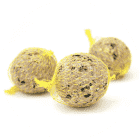
Suet
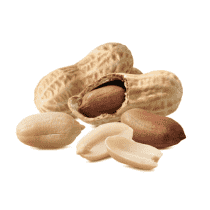
Peanuts
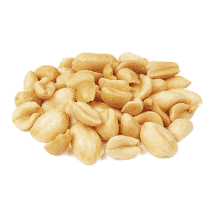
Peanut Hearts

Mealworms
Bird Feeder Type

Large Tube Feeder

Small Tube Feeder
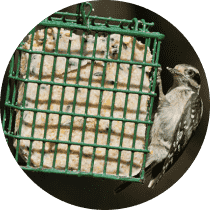
Suet Cage

Large Hopper

Small Hopper

Platform
Behavior
Juniper Titmouse exhibit a lively behavior, primarily flitting across the canopy and mid-levels of pinyon-juniper woodlands. Their daily activities consist of agilely foraging for seeds and insects, utilizing their sturdy bills to crack open food items by hammering them against branches. Notably, these creatures form monogamous pairs early on, showing a remarkable commitment to lifelong partnerships. They exhibit territorial instincts, vigorously defending their areas all year from intruders with display behaviors like crest-raising and vocal alarms. While they mostly keep to themselves, in winter, they maintain this solitary trait, opting not to mingle with other bird species. Juniper Titmouse are vigilant, though they face predation risks to their offspring from specific birds and reptiles.
Species Status
Not globally threatened.
Scientific Classification
Phylum
Chordates Class
Birds Order
Perching birds Family
Tits Genus
Titmice Species
Juniper Titmouse